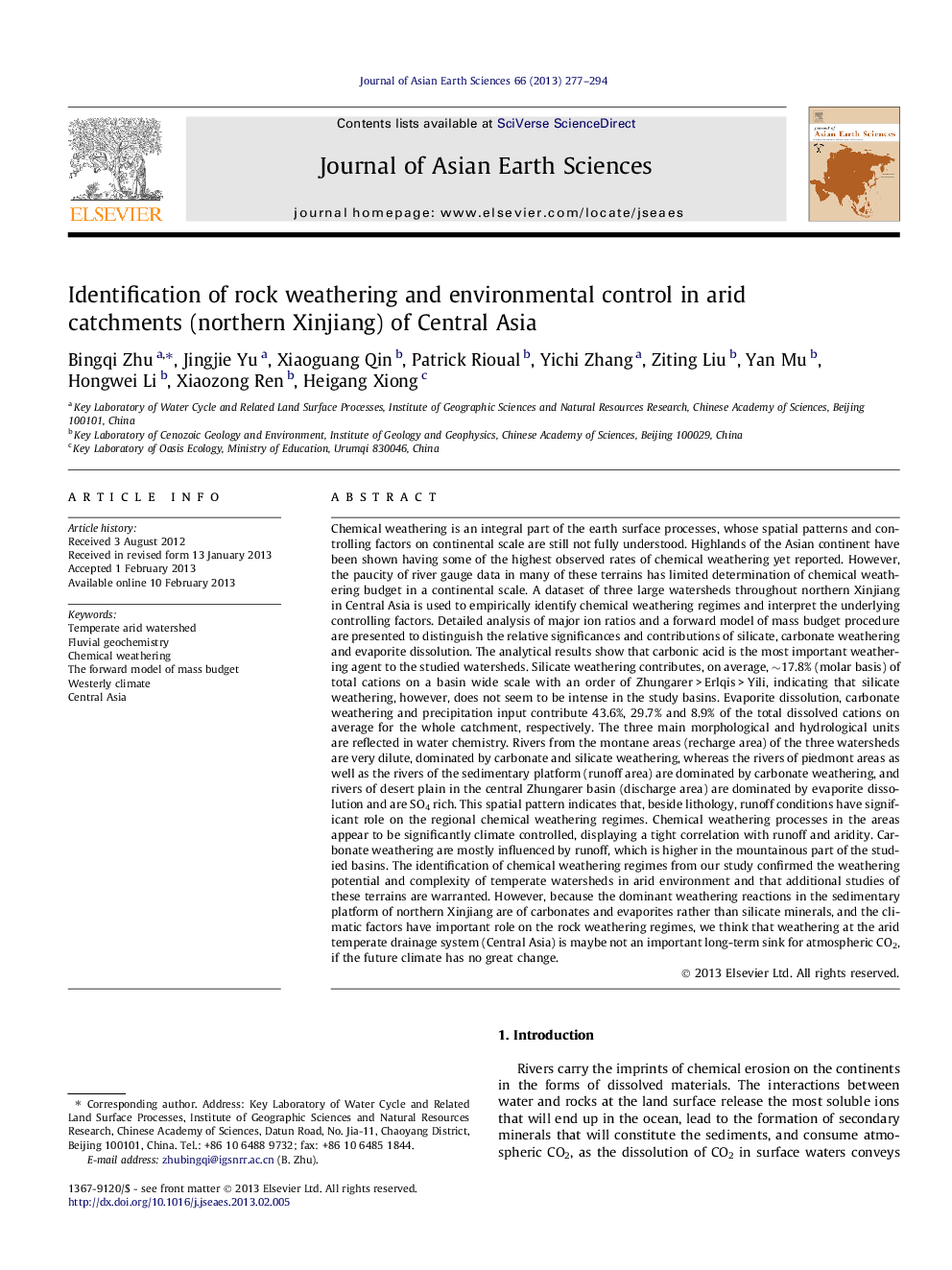| کد مقاله | کد نشریه | سال انتشار | مقاله انگلیسی | نسخه تمام متن |
|---|---|---|---|---|
| 4731183 | 1640399 | 2013 | 18 صفحه PDF | دانلود رایگان |
Chemical weathering is an integral part of the earth surface processes, whose spatial patterns and controlling factors on continental scale are still not fully understood. Highlands of the Asian continent have been shown having some of the highest observed rates of chemical weathering yet reported. However, the paucity of river gauge data in many of these terrains has limited determination of chemical weathering budget in a continental scale. A dataset of three large watersheds throughout northern Xinjiang in Central Asia is used to empirically identify chemical weathering regimes and interpret the underlying controlling factors. Detailed analysis of major ion ratios and a forward model of mass budget procedure are presented to distinguish the relative significances and contributions of silicate, carbonate weathering and evaporite dissolution. The analytical results show that carbonic acid is the most important weathering agent to the studied watersheds. Silicate weathering contributes, on average, ∼17.8% (molar basis) of total cations on a basin wide scale with an order of Zhungarer > Erlqis > Yili, indicating that silicate weathering, however, does not seem to be intense in the study basins. Evaporite dissolution, carbonate weathering and precipitation input contribute 43.6%, 29.7% and 8.9% of the total dissolved cations on average for the whole catchment, respectively. The three main morphological and hydrological units are reflected in water chemistry. Rivers from the montane areas (recharge area) of the three watersheds are very dilute, dominated by carbonate and silicate weathering, whereas the rivers of piedmont areas as well as the rivers of the sedimentary platform (runoff area) are dominated by carbonate weathering, and rivers of desert plain in the central Zhungarer basin (discharge area) are dominated by evaporite dissolution and are SO4 rich. This spatial pattern indicates that, beside lithology, runoff conditions have significant role on the regional chemical weathering regimes. Chemical weathering processes in the areas appear to be significantly climate controlled, displaying a tight correlation with runoff and aridity. Carbonate weathering are mostly influenced by runoff, which is higher in the mountainous part of the studied basins. The identification of chemical weathering regimes from our study confirmed the weathering potential and complexity of temperate watersheds in arid environment and that additional studies of these terrains are warranted. However, because the dominant weathering reactions in the sedimentary platform of northern Xinjiang are of carbonates and evaporites rather than silicate minerals, and the climatic factors have important role on the rock weathering regimes, we think that weathering at the arid temperate drainage system (Central Asia) is maybe not an important long-term sink for atmospheric CO2, if the future climate has no great change.
► Carbonic acid is the most important weathering agent to the studied watersheds.
► Silicate weathering contributes ∼17.8% of total cations on a basin scale on average.
► Evaporite, carbonate and precipitation contribute 43.6%, 29.7% and 8.9% of cations.
► Beside lithology, runoff conditions have significant role on chemical weathering.
► Chemical weathering regime is significantly climate controlled by runoff and aridity.
Journal: Journal of Asian Earth Sciences - Volume 66, 8 April 2013, Pages 277–294
